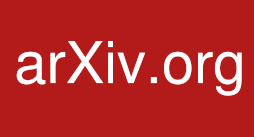Documentdetail
ID kaart
oai:arXiv.org:2403.15593
Onderwerp
Computer Science - Computer Vision... Computer Science - Machine Learnin...Auteur
Dehdashtian, Sepehr Wang, Lan Boddeti, Vishnu NareshCategorie
Computer Science
Jaar
2024
vermelding datum
22-05-2024
Trefwoorden
zero-shot computer learning representationsBeschrijving
Large pre-trained vision-language models such as CLIP provide compact and general-purpose representations of text and images that are demonstrably effective across multiple downstream zero-shot prediction tasks.
However, owing to the nature of their training process, these models have the potential to 1) propagate or amplify societal biases in the training data and 2) learn to rely on spurious features.
This paper proposes FairerCLIP, a general approach for making zero-shot predictions of CLIP more fair and robust to spurious correlations.
We formulate the problem of jointly debiasing CLIP's image and text representations in reproducing kernel Hilbert spaces (RKHSs), which affords multiple benefits: 1) Flexibility: Unlike existing approaches, which are specialized to either learn with or without ground-truth labels, FairerCLIP is adaptable to learning in both scenarios.
2) Ease of Optimization: FairerCLIP lends itself to an iterative optimization involving closed-form solvers, which leads to $4\times$-$10\times$ faster training than the existing methods.
3) Sample Efficiency: Under sample-limited conditions, FairerCLIP significantly outperforms baselines when they fail entirely.
And, 4) Performance: Empirically, FairerCLIP achieves appreciable accuracy gains on benchmark fairness and spurious correlation datasets over their respective baselines.
;Comment: The Twelfth International Conference on Learning Representations (ICLR) 2024
Dehdashtian, Sepehr,Wang, Lan,Boddeti, Vishnu Naresh, 2024, FairerCLIP: Debiasing CLIP's Zero-Shot Predictions using Functions in RKHSs

TurkishMMLU: Measuring Massive Multitask Language Understanding in Turkish
evaluate provide turkishmmlu questions language
The Measurement of Acculturation in Neuropsychological Evaluations of Hispanic/Latino Individuals across the Lifespan: A Scoping Review of the Literature
evidence review lifespan various validation acculturation measures

